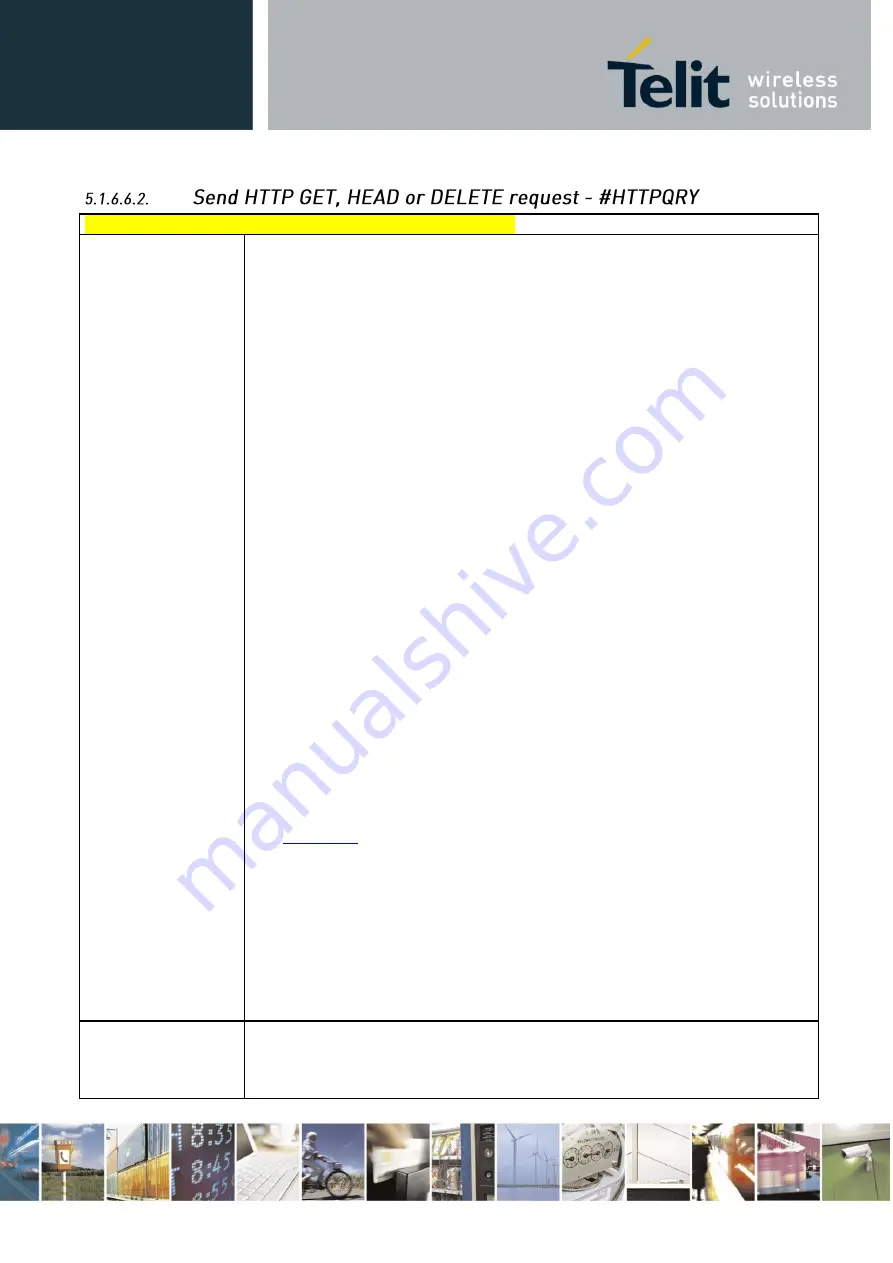
LE910-SKG AT commands reference guide
80437ST10619A Rev.1 – 2014-09-16
Reproduction forbidden without Telit Communications S.p.A. written authorization - All Rights Reserved
page 234 of 273
#HTTPQRY – send HTTP GET, HEAD or DELETE request
AT#HTTPQRY=<pr
of_id>,<command>,<
resource>[,<extra_he
ader_line>]
Execution command performs a GET, HEAD or DELETE request to HTTP server.
Parameters:
<prof_id>
- Numeric parameter indicating the profile identifier.
Range: 0-2
<command>
: Numeric parameter indicating the command requested to HTTP
server:
0 – GET
1 – HEAD
2 – DELETE
<resource>
: String parameter indicating the HTTP resource (uri), object of the
request
<extra_header_line>
: String parameter indicating optional HTTP header line
If sending ends successfully, the response is OK; otherwise an error code is reported.
Note: the HTTP request header sent with #HTTPQRY always contains the
“Connection: close” line, and it can not be removed.
When the HTTP server answer is received, then the following URC is put on the
serial port:
#HTTPRING: <prof_id>,<http_status_code>,<content_type>,<data_size>
Where:
<prof_id>
is defined as above
<http_status_code>
is the numeric status code, as received from the server
<content_type>
is a string reporting the “Content-Type” header line, as
received from the server (see RFC 2616)
<data_size>
is the byte amount of data received from the server. If the server
doesn’t report the "Content-Length:" header line, the parameter value is 0.
Note: if there are no data from server or the server doesn’t answer within the time
interval specified in
<timeout>
parameter of
#HTTPCFG
command, then the URC
#HTTPRING
<http_status_code>
parameter
has value 0.
AT#HTTPQRY=?
Test command reports the supported range of values for the parameters
<prof_id>
and
<command>
and the maximum length of
<resource>
parameter
in the format:
#HTTPQRY: (list of supported <prof_id>s),(list of supported
Содержание LE910-SKG
Страница 1: ......
















































